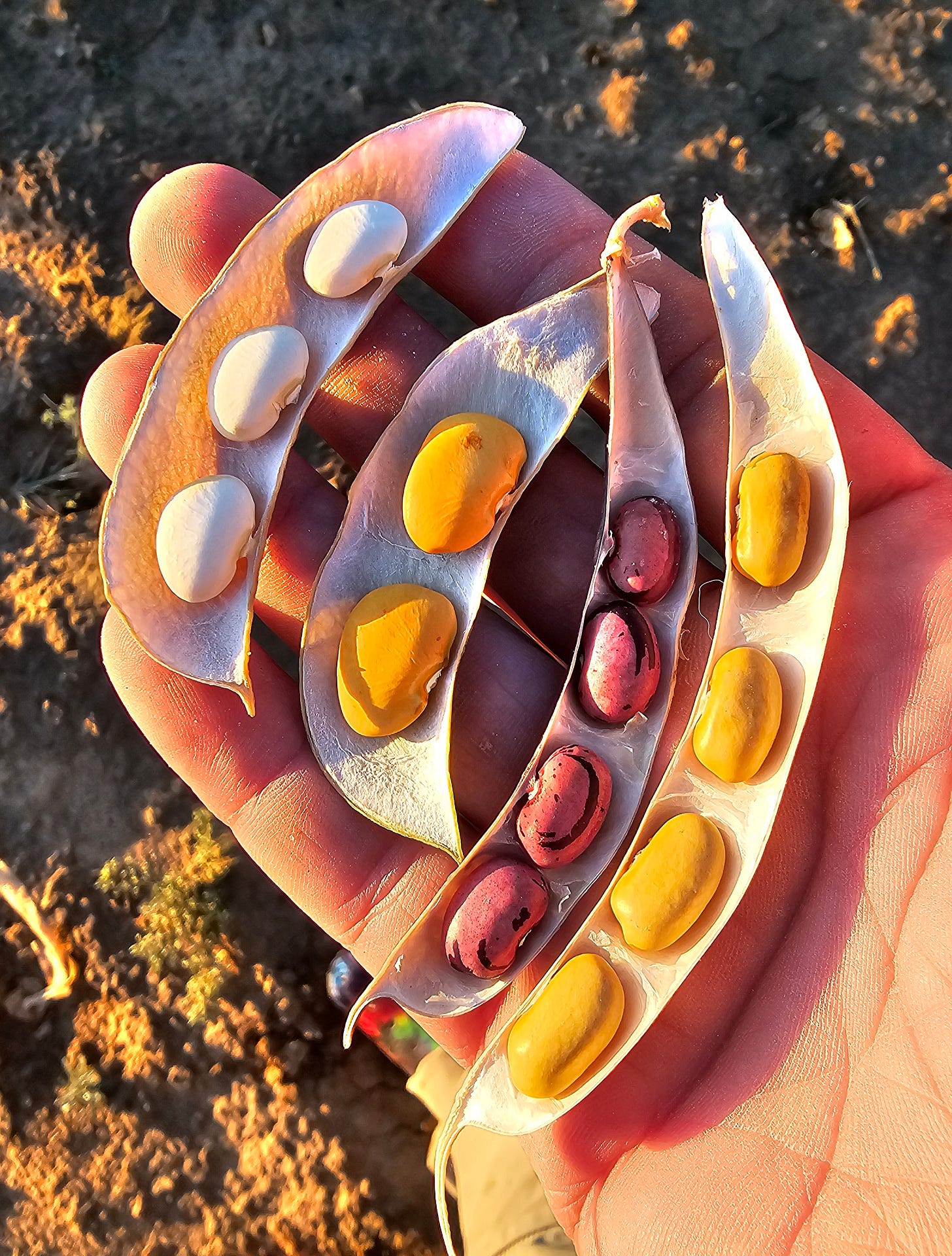Dear Solution-aries,
The last year was hard. We lost a family member, struggled with health issues and financial difficulties, and I worry about the future of my profession under the new presidency.
The topic of this newsletter reflects my motto for 2025: seeds in the desert.
Pictures by Michael Kotutwa Johnson
I spoke with Navajo elder and Arizona professor Michael Kotutwa Johnson who grows beans, corn, squash, even melons, without irrigation and fertilizer in the desert. The Navajo have practiced dry farming for millennia and with the current drought, they’re reviving their ancient techniques (and seeds).
Kotutwa Johnson’s fields look vastly different from the endless rows of corn typical in much of rural North America. Bundled in groups of five or six, his corn stalks shoot out of the sandy desert in clusters, resembling bushels rather than tightly spaced rows.
He practices the Hopi tradition he learned from his grandfather on the Little Colorado River Plateau in northeastern Arizona, a 90-minute drive from Flagstaff: “In spring, we plant eight to ten corn kernels and beans per hole, spaced further apart, so the clusters stand together against the elements and preserve the soil moisture.” High winds often blow sand across the barren plateau. “This year was pretty hot and dry, but still, some of the crops I raised did pretty well,” he says with a satisfied smile. “It’s a good year for squash, melons and beans. I’ll be able to propagate these.”
He might build some protection for his crops using desert brush or cans to shield them from the wind, but his plants thrive without any fertilizer, pesticides, herbicides, mulch or irrigation. This is all the more impressive since his area usually receives less than ten inches of rain per year.
In the era of climate change, dry farming practices are generating growing interest from scientists and researchers as farmers grapple with unpredictable weather patterns. Farmers in Mexico, the Middle East, Argentina, Southern Russia and Ukraine all have experimented with dry farming, relying on natural rainfall, though conditions and practices vary in each region.
Read the full story here in Reasons to be Cheerful!
Sprouting seeds in arid conditions seems an apt job description for a solutions journalist.
While a lot of things seemed to be getting worse last year, here are 150 ways the world actually got better. The link leads you to 144 stories my colleagues at Reasons to be Cheerful and I have written in 2024.
For instance,
The Transfarmation Project is helping hundreds of farmers to quit factory farming and transition to growing non-industrial crops like mushrooms and herbs.
Immediate skin-to-skin practice known as kangaroo mother care could save the lives of 150,000 newborn babies globally every year.
An online platform to help people focus has hosted over five million sessions, with users in over 150 countries.
Since its inception 15 years ago, nonprofit Food Forward has rescued 217,000 tons of produce and distributed it to nearly 300 hunger relief partners.
In California, 15,000 acres of shoreline are being restored to tidal wetlands and habitat for wildlife.
If you still need more proof, here are six more general ways life improved:
Income inequality is decreasing.
Murder rates are going back down after a pandemic bump.
Traffic fatalities are also down for the second consecutive year.
Average college tuition costs are beginning to decrease.
The U.S. economy managed to avoid the recession it was bracing for since its bout of post-pandemic inflation.
Global poverty rates continue their trend of decline that’s been ongoing for years. This applies to the world’s child mortality rates as well.
What makes you hopeful for 2025?
Cheerfully,
Michaela



